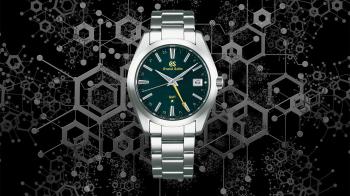When we mention innovation in the world of watchmaking, many people instinctively think of smart watches. I know that this may anger some of you, but unfortunately nobody can deny the impact of new technology being transferred on to the wrist. I know that some of you might say that you will never be affected by it, but I seem to have heard such sweet music once before…
But don’t worry, I’m not going to write a “Why not...?” about the Apple watch! Hopefully some of you are already feeling a little more reassured…
Let’s delve a little deeper in terms of innovation. In my view there are two kinds of innovations: those that improve and those that transform. In the former category we find everything that has brought technical improvements to something that already existed, making it more reliable, more robust or more precise. This type of change often occurs more discreetly, is easier to “sell” but does not necessarily generate huge enthusiasm or huge criticism.
But there are also innovations that transform.
This is an entirely different category. Here in California we are at the heart of “disruptive innovations”. Their aim is simple: break with the past and rethink things with new benchmarks. These breakthrough technologies aim to pierce through situations, break them or unblock them. They transform entire industries, ecosystems and even the entire world. Things like Uber, Airbnb, the iPhone and the robots of Intuitive Surgical spring to mind.
In these cases technology isn’t everything. There also needs to be a desire to do things differently and move away from respected ancestral codes. Such changes at first seem amusing. They generate some modest interest among incumbents… until they start destroying everything in their path.
The taxi driver who took me home from Los Angeles airport recently didn’t stop talking about Uber. When I asked him why the taxi companies had not thought about an “App” when they already knew the personal transport business inside out, his reply was simple but tinged with sadness: “We didn’t see it coming, they know nothing and when Uber first arrived, we just laughed…”
Innovation seduces, disturbs, destroys and transforms. Above and beyond the technological aspect, it changes drastically the way we perceive an object or a service. There is a before and an after.
The success of disruptive innovation is also linked to communication. Sometimes it’s not easy to explain a technical improvement or transform it into an attractive – and profitable – reality. Many people still use the old to explain the new, along the lines of “it’s the same, but better”. And I am (still) not talking about watchmakers and the nostalgia for neo-vintage.
When innovation becomes absolute, it breaks the mould. It goes against the flow, shrugs off the established conventions of a profession and abandons its common ground. It speaks differently. Its aim is to address future users by breaking conventions and forcing people to adapt a new approach and a new way of thinking. Airbnb does not speak like a hotel, Uber is unfamiliar with the vocabulary of taxis and the Apple Watch does not use the language of the watchmaker.
And what role does the watch industry play in all this? One of incremental progress or one of rupture?
The answer is not as easy as you would think because another factor comes into play: time. It destroys, replaces and makes things out of date. Yesterday’s revolutionary innovation can soon become “has been”. Innovation must never stop, otherwise it risks being overtaken.
This is truer than ever before.
Watchmaking and the measurement of time were once disruptive technologies. We needed innovation in order to be able to measure time precisely, constantly and universally. Watchmaking was born from the idea that a technology could change the world.
But that was a long time ago.
After that, innovation became incremental. There were occasional movements here and there. Always better, always more precise. The seduction continues but the culture of disruptive innovation is slowly disappearing.
Until the day we remember it.
The fascinating history of quartz technology is a case in point. A quick search will confirm that the piezo-electric properties of quartz were discovered in France by Pierre and Jacques Curie, a very long time ago. The Americans at Bell Telephone later invented the first quartz clock. Then came watches and the first two quartz movements presented in 1967, one by the Swiss at the CEH (Centre Electronique Horloger) and the other by the Seiko research centre in Japan.
The history of the CEH is interesting. It was created in 1962 to counter American and Japanese initiatives and its aim was to bring the disruptive quartz technology to Swiss industry. Although the CEH was behind the Beta 1 movement, it was Seiko and the Japanese who won the technological, industrial and commercial battle. In 1969 the famous Seiko Astron 35SQ was launched. The tsunami would hit Switzerland a few months later.

So it is difficult to dissociate quartz technology from the success of Seiko. If the image of quartz movements today is a little jaded, we must nevertheless recall that it was a genuinely disruptive innovation. Because it was not about the technology on its own. There was also the industrialisation and commercialisation. Quartz “shaved” the classical watch industry with three blades: a technological change that was easy to explain (reliabilitiy, precision, ease of use), an increase in industrial power (easy to manufacture and case up) and a commercial strategy that started at the top of the range (at the time quartz watches were more expensive than automatic mechanical watches) but later flooded the market.
Quartz is no longer a disruptive innovation. You need to go to Silicon Valley for such things nowadays. Nevertheless, collectors still have fond memories of it. Vintage quartz Seikos are increasingly sought after, and their prices are skyrocketing. You just need to visit some forums to see the demand for the first Seiko quartz chronographs from the 7A XX, 2002, King Quartz, 7548 diver and Tuna Gold series, and, of course, the Grand Seiko Quartz models launched in 1988.
So does the future belong to quartz?
Why Grand Seiko?
I am lucky enough to travel regularly to Japan and I really got to know Seiko and Grand Seiko on numerous visits to Tokyo, sometimes punctuated with fortuitous encounters with Japanese collectors.
Let’s not beat about the bush. Grand Seiko is today a brand that offers some of the most beautiful automatic, manual and quartz movements in the entire world of watchmaking. Collectors don’t make mistakes and the demand for Grand Seiko models continues to increase. Recently, Seiko even decided to transform its luxury division into a brand in its own right, hinting at an expansionist strategy.
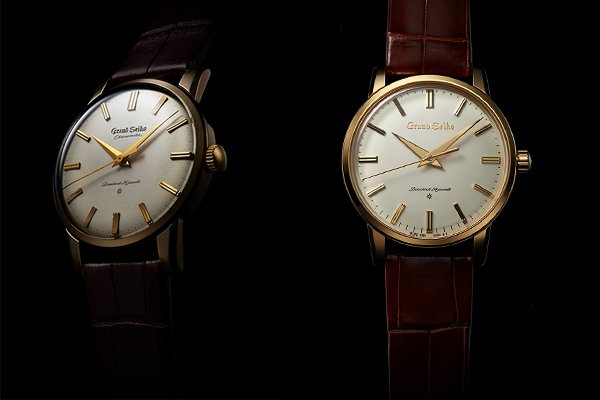
The Grand Seiko story started in 1960 with the first GS, which was recently re-issued. Numerous legendary watches followed, including the first automatic GS (the 62 GS) in 1967, the exceptional VFA of 1969 and the Spring Drive technology presented in 2004.
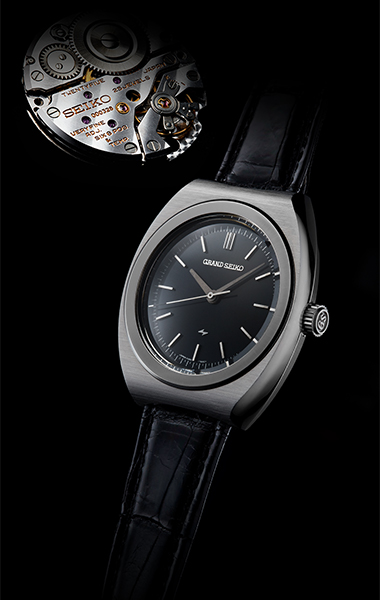
Today, Grand Seiko has earned itself a place among the best watch brands in the world. Its image never stops improving and the brand is emerging from a period of self-imposed discretion. Having been reserved for the Japanese for a long time, it is now ready to take on the world, offering watches of incredible quality to the most discerning customers.
Each GS watch is characterised by a classical – even immutable – design and finishing that is close to perfection. Production at Grand Seiko is fully integrated, which puts it at the same level as the biggest Swiss brands. In short, choosing Grand Seiko means entering the world of Japanese high-end watchmaking and owning a watch like no other, with the charm, attention to detail and strictness that is typical of Japan.
The Grand Seiko SBGN007G : were there to be only one…
It is true that I could have chosen a Seiko for this “Why not...?” about innovation and quartz. But instead I have opted for the Grand Seiko 9F calibre, which is perhaps the only quartz calibre that can be qualified as “haute horlogerie”.
To understand the Grand Seiko SBGN007G, you need to look above all at this famous 9F calibre. It was launched 25 years ago and Grand Seiko celebrated this anniversary with several limited editions, including the SBGN007G.
We can describe the 9F as a movement that is manufactured in exactly the same way as a high-end mechanical movement. It is nothing like the stereotypical quartz movement in plastic that is disposable and costs next to nothing. No, the 9F is the best you can get in the world of battery-powered watches, by a long chalk.
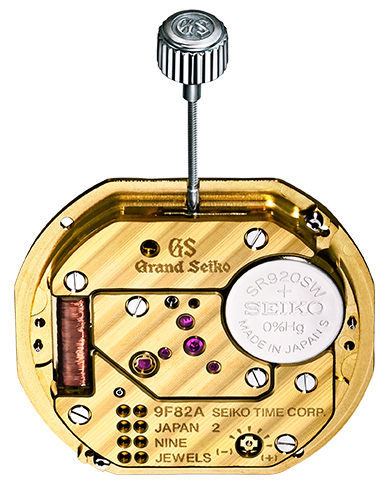
A high-end mechanical movement is assembled solely by hand: the 9F is too.
A high-end mechanical movement is precision adjusted and regulated: the 9F is too.
A mechanical movement uses high-end components: the 9F does too!
I’ll stop there, because I think you’ve probably understood. If there is a quartz movement that can seduce a fan of mechanical watches, it’s the 9F.
In addition to the movement inside this model, the Grand Seiko SBGN007G is a perfect example of what a Grand Seiko should be.
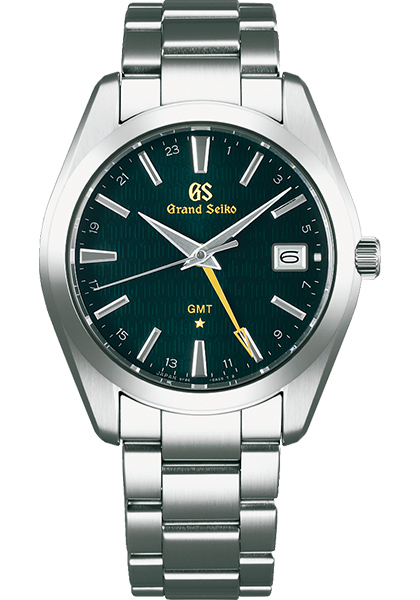
Classic design, Zaratsu hand-polished case and a dial with the original Grand Seiko and Seiko quartz logo. Grand Seiko is renowned for the finishing of its dials and this model is no exception. The reflections and its depth react to light in a unique way, giving the dark-grey colour some interesting hues.
But that’s not all.
For the first time, Grand Seiko is using a unique grey colour, for which some of the reflections are quite dark. You can also see a gold star at 6 o’clock, reserved for high-precision models, and other details in yellow.
Another innovation from this Grand Seiko SBGN007G is that it offers a GMT function for the first time. In addition to the classic three hands, there is also a GMT hand in yellow. The combination of grey and yellow works very well and gives this watch a special charm.
In addition to all these characteristics, the Grand Seiko is fitted with an extremely classical steel bracelet. Seiko may well be criticized occasionally for the finish of its bracelets, but like everything else with a Grand Seiko, it’s difficult to find fault with the bracelet.
In summary, if you’ve changed your mind about quartz movements having read this article, the Grand Seiko SBGN007G is the watch to add to your collection. It is beautiful, easy to wear and easy to use. It is a watch that will surprise you in many different ways.
What does the devil’s advocate think?
Of course our horological Lucifer could criticise the quartz movement. But we have already seen that he will quickly run out of arguments.
Then there is the fact that it is a limited edition of 1,200. If you hurry, you might still be able to find one. But do not underestimate the demand for this kind of watch.
In my opinion, the only points that could come in for some criticism are the double Grand Seiko/GS logo, which clutters the dial a little, and the date, which would have benefited from a colour similar to the dial.
I would also have liked to see this SBGN007G offered on a leather strap, since the dial opens up possibilities for some interesting and original combinations.
What style should you wear this Grand Seiko SBGN007G with?
Tradition, innovation and Japan are the three things that should dictate the style to go with this watch. So why not start with a highly original suit: the Adidas Icon Suit, developed in partnership with one of the best men’s stores in the world, Isetan Shinjuku (Tokyo). It is a suit in a sporty version using materials normally reserved for running wear… It’s interesting, original, fun and off-beat. It’s a great start.
You could, of course, go full Adidas with the classic white sneakers. But I prefer the Onitsuka Tiger Corsair – Made in Japan. This white model with a beige sole would match the sporty look perfectly.
No shirt with this suit, instead a T-shirt, ideally a Bathing Ape Reflector 1st camo, which combines the brand’s famous gorilla with its equally famous camouflage motif.
To round of this look from the Land of the Rising Sun you need to add a backpack that the Japanese love. The choice is huge, and my preference would be for a Visvim in white Cordura or a Master-Piece Lightning Dye in khaki.
All that remains is to put your GS on your wrist and let your imagination run free as you walk through the streets of your town!
